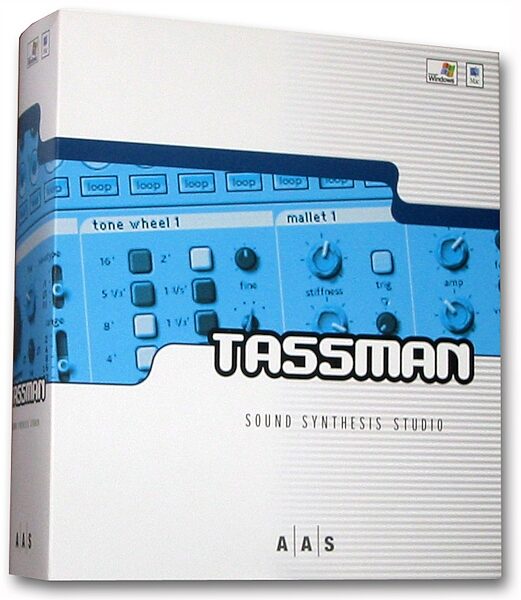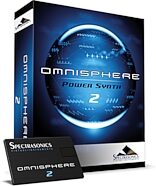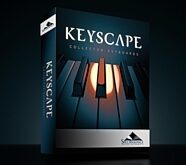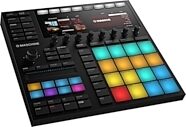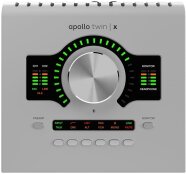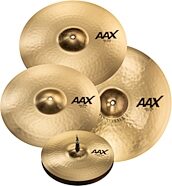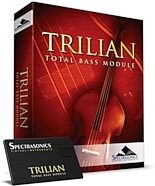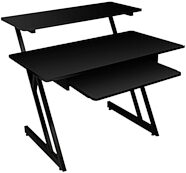Applied Acoustics Tassman Software Synth (Macintosh and Windows)
No longer available at zZounds

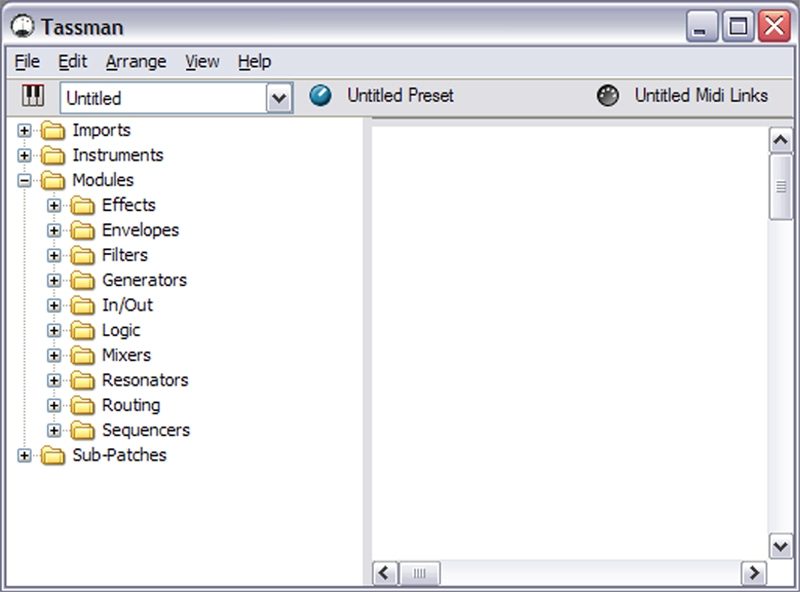
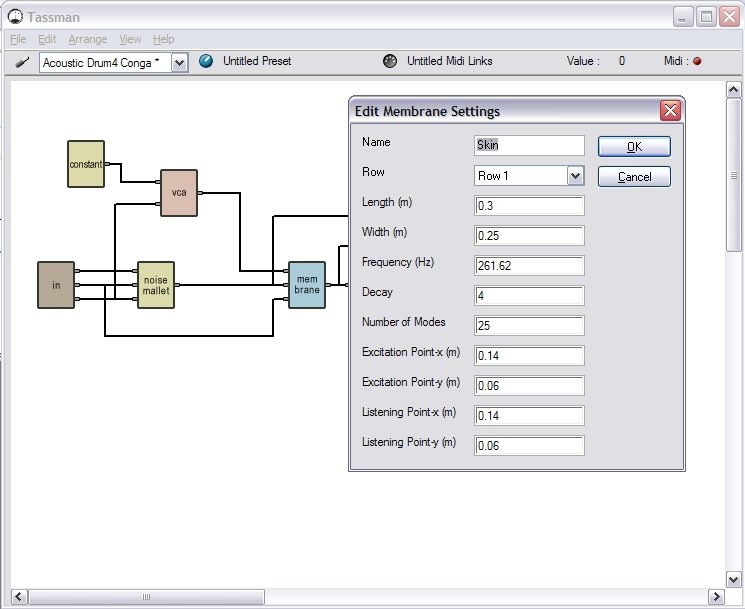
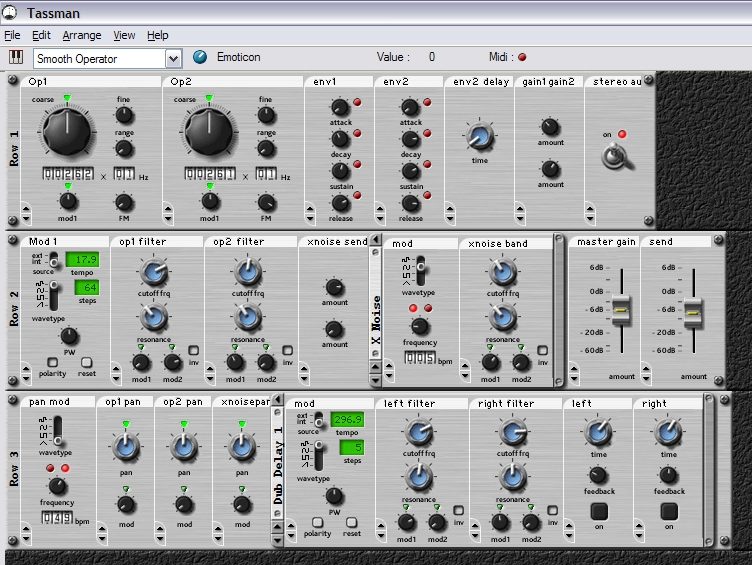
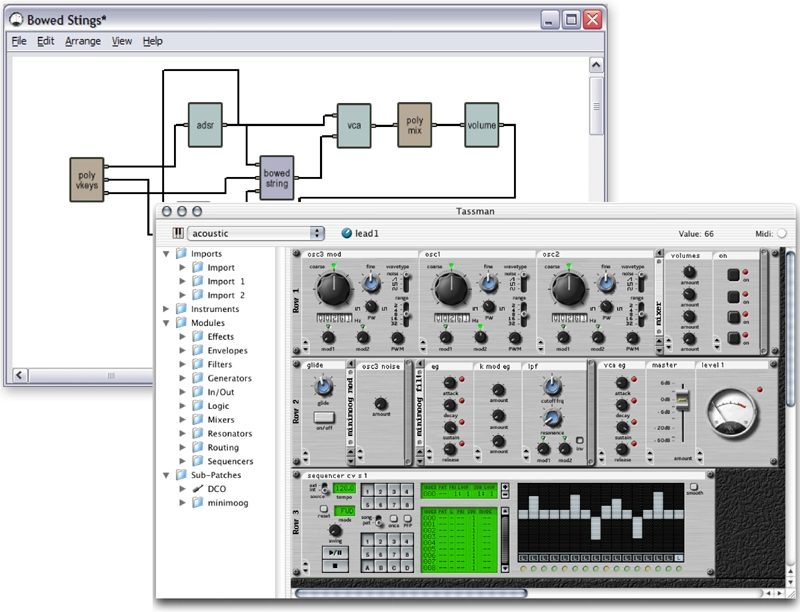





zZounds Gear Experts Say...
50 pre-patched instruments. Over 1000 presets right out of the box.
Overview
The Tassman Sound Synthesis Studio
The Tassman is a modular instrument and sound design environment based on physical modeling. Whether you are new to the world of synths and sound design, or a seasoned industry professional, the Tassman offers virtually endless creative possibilities, in an intuitive, easy to use environment. Far from being an emulation of any one vintage synthesizer, the Tassman is in fact an ever expanding collection of instruments and sound design tools, sure to provide inspiration for virtually any project.
Version 3: New Features:
Now - Now available for Mac OS (OS 9.x/OS X.2) and Windows PC (WinXP/2000/ME/98SE)
Support for MAS and DirectConnect
Core processing engine has been re-written from the ground up for greater performance and sound quality
Browser, Builder, and Player now integrated into a single window
Resizable window with horizontal and vertical scroll bars for easy navigation
Redesigned, color coded Builder interface
50 all new instruments covering the full range of analog, acoustic, and hybrid constructions, with over 1000 presets.
Integrated browser for drag and drop access to all necessary tools including instruments, sub-patches, presets, modules, and MIDI maps
MIDI Learn / Forget for all on-screen controls
Save multiple MIDI maps for each instrument
Support for aftertouch from keyboards with this functionality
Import and Export Instruments with all associated presets and sub-patches as a single file for easy exchange with… read more other users and archiving
Many new modules including new control elements, envelopes with modulation input for each stage, 3 new sequencers, filters, FX, and much more
Physical Modeling: An Overview
Physical Modeling is a uniquely powerful synthesis technique, which uses the laws of physics to reproduce the behavior of an object. In other words the Tassman solves, in real time, mathematical equations describing how an object functions. It uses no sampling, it simply calculates the sound as you play in accordance to the controls it receives.
This is a very general and powerful approach since the result is obtained by reproducing how an object creates sound rather than trying to reproduce the sound signal itself using wavetables, additive synthesis, samples, etc. This implies that a module can generate very different sounds depending on the driving signals it receives. For example, different sounds will be made by a plate of a given geometry and material, depending on the strength of the mallet impact and its impact point. It will behave differently again if you hit the plate when it is at rest or when it is already in motion. Physical modeling takes all these parameters into account naturally since it reproduces the behavior of the real object. This results in very natural and realistic sounds and reproduces the control you would expect from real acoustic instruments, as well as the warmth of real analog circuits.
Inspiration on Demand: Synths and Presets
The Tassman provides you with a collection of 50 pre-patched instruments, and over 1000 presets right out of the box. You' ll find all the classic analog and FM instrument emulations you'd expect in a modular synthesis solution, staggeringly realistic acoustic instruments including various drums and chromatic percussion, string instruments of all shapes and sizes, an electric piano, tonewheel and pipe based organs, and more, complete with the nuances and subtleties that would be simply unattainable with a sample based solution. Add to this instruments which allow you to import your own samples and utilize them as you would any of the other tone generators, and unique hybrid constructions which combine these various elements, and the possibilities are truly endless.
Drag and Drop Access: The Browser
While it may not add to the range of sounds the Tassman produces, the Browser is one of version 3's most exciting new features. The Tassman's Browser is similar to those found in most email programs. Using a simple tree structure, all the elements used in in the building and playing of synths are available using a visually intuitive, drag and drop approach, including instruments, sub-patches, modules and presets. This means you'll spend less time searching for the sounds you need, and more time getting down to the business of making music. The browser also allows you to export a synth and all of it's associated sub-patches and presets as a single file, for easy exchange with other users.
The browser organizes all of the modules, sub-patches, instruments, and presets into clearly defined groups making it easy to find the tools you need, when you need them.
At the Controls: The Player
The front panel display of the Tassman's Player view was inspired by classic analog hardware making it easy to understand and use. All the parameters for each module are clearly mapped out using large, easy to read knobs and sliders, as well as classic 'chicken head' selectors and switches. Upon moving any of the on screen controls, the current MIDI value is displayed in the toolbar making it simple to set values precisely.
The players drop down menus contain the various control panels for audio and MIDI configuration, and performance. The Tassman supports many of the most popular driver standards including ASIO, EASI, DirectX, MME, Sound manager, and WDM, making it it compatible with nearly every sound card on the market.
Create and Customize: The Builder
While the Player view makes it easy to tweak any of the existing presets to create your own custom sounds and save them for instant recall, the Builder also allows you to customize the way individual modules are connected within a synth, or even create your own instruments from the ground up, using an intuitive 'building block' approach. The Tassman also comes with various 'sub-patches (pre-configured groups of commonly used generators, filters, and effects), meaning you don't have to reinvent the wheel every time you think a synth could use a little something extra, and you can of course, create your own sub-patches for use in later constructions. You can also save sub-patch presets just like you would with a hardware effects unit. This 3 level approach to modules, sub-patches, and instruments means the you can explore the Tassman at your own pace. The range of creative possibilities expands right along with you.
Double clicking on any module in the builder brings up its properties window, allowing you to set nearly all parameters before launching your synth, giving you complete control of its initial state. This window also allows you to set the vertical position of each module across the eight rows of the player interface. The modules horizontal positions are a mirror image of their placement in the builder.
Total Integration: Plug-ins
The Tassman also offers total integration with today's most powerful sequencing applications as a DXi, MAS, and VST instrument plug-in, or via the DirectConnect interface for Pro Tools. read less
The Tassman is a modular instrument and sound design environment based on physical modeling. Whether you are new to the world of synths and sound design, or a seasoned industry professional, the Tassman offers virtually endless creative possibilities, in an intuitive, easy to use environment. Far from being an emulation of any one vintage synthesizer, the Tassman is in fact an ever expanding collection of instruments and sound design tools, sure to provide inspiration for virtually any project.
Version 3: New Features:
Now - Now available for Mac OS (OS 9.x/OS X.2) and Windows PC (WinXP/2000/ME/98SE)
Support for MAS and DirectConnect
Core processing engine has been re-written from the ground up for greater performance and sound quality
Browser, Builder, and Player now integrated into a single window
Resizable window with horizontal and vertical scroll bars for easy navigation
Redesigned, color coded Builder interface
50 all new instruments covering the full range of analog, acoustic, and hybrid constructions, with over 1000 presets.
Integrated browser for drag and drop access to all necessary tools including instruments, sub-patches, presets, modules, and MIDI maps
MIDI Learn / Forget for all on-screen controls
Save multiple MIDI maps for each instrument
Support for aftertouch from keyboards with this functionality
Import and Export Instruments with all associated presets and sub-patches as a single file for easy exchange with… read more other users and archiving
Many new modules including new control elements, envelopes with modulation input for each stage, 3 new sequencers, filters, FX, and much more
Physical Modeling: An Overview
Physical Modeling is a uniquely powerful synthesis technique, which uses the laws of physics to reproduce the behavior of an object. In other words the Tassman solves, in real time, mathematical equations describing how an object functions. It uses no sampling, it simply calculates the sound as you play in accordance to the controls it receives.
This is a very general and powerful approach since the result is obtained by reproducing how an object creates sound rather than trying to reproduce the sound signal itself using wavetables, additive synthesis, samples, etc. This implies that a module can generate very different sounds depending on the driving signals it receives. For example, different sounds will be made by a plate of a given geometry and material, depending on the strength of the mallet impact and its impact point. It will behave differently again if you hit the plate when it is at rest or when it is already in motion. Physical modeling takes all these parameters into account naturally since it reproduces the behavior of the real object. This results in very natural and realistic sounds and reproduces the control you would expect from real acoustic instruments, as well as the warmth of real analog circuits.
Inspiration on Demand: Synths and Presets
The Tassman provides you with a collection of 50 pre-patched instruments, and over 1000 presets right out of the box. You' ll find all the classic analog and FM instrument emulations you'd expect in a modular synthesis solution, staggeringly realistic acoustic instruments including various drums and chromatic percussion, string instruments of all shapes and sizes, an electric piano, tonewheel and pipe based organs, and more, complete with the nuances and subtleties that would be simply unattainable with a sample based solution. Add to this instruments which allow you to import your own samples and utilize them as you would any of the other tone generators, and unique hybrid constructions which combine these various elements, and the possibilities are truly endless.
Drag and Drop Access: The Browser
While it may not add to the range of sounds the Tassman produces, the Browser is one of version 3's most exciting new features. The Tassman's Browser is similar to those found in most email programs. Using a simple tree structure, all the elements used in in the building and playing of synths are available using a visually intuitive, drag and drop approach, including instruments, sub-patches, modules and presets. This means you'll spend less time searching for the sounds you need, and more time getting down to the business of making music. The browser also allows you to export a synth and all of it's associated sub-patches and presets as a single file, for easy exchange with other users.
The browser organizes all of the modules, sub-patches, instruments, and presets into clearly defined groups making it easy to find the tools you need, when you need them.
At the Controls: The Player
The front panel display of the Tassman's Player view was inspired by classic analog hardware making it easy to understand and use. All the parameters for each module are clearly mapped out using large, easy to read knobs and sliders, as well as classic 'chicken head' selectors and switches. Upon moving any of the on screen controls, the current MIDI value is displayed in the toolbar making it simple to set values precisely.
The players drop down menus contain the various control panels for audio and MIDI configuration, and performance. The Tassman supports many of the most popular driver standards including ASIO, EASI, DirectX, MME, Sound manager, and WDM, making it it compatible with nearly every sound card on the market.
Create and Customize: The Builder
While the Player view makes it easy to tweak any of the existing presets to create your own custom sounds and save them for instant recall, the Builder also allows you to customize the way individual modules are connected within a synth, or even create your own instruments from the ground up, using an intuitive 'building block' approach. The Tassman also comes with various 'sub-patches (pre-configured groups of commonly used generators, filters, and effects), meaning you don't have to reinvent the wheel every time you think a synth could use a little something extra, and you can of course, create your own sub-patches for use in later constructions. You can also save sub-patch presets just like you would with a hardware effects unit. This 3 level approach to modules, sub-patches, and instruments means the you can explore the Tassman at your own pace. The range of creative possibilities expands right along with you.
Double clicking on any module in the builder brings up its properties window, allowing you to set nearly all parameters before launching your synth, giving you complete control of its initial state. This window also allows you to set the vertical position of each module across the eight rows of the player interface. The modules horizontal positions are a mirror image of their placement in the builder.
Total Integration: Plug-ins
The Tassman also offers total integration with today's most powerful sequencing applications as a DXi, MAS, and VST instrument plug-in, or via the DirectConnect interface for Pro Tools. read less
Specs
Macintosh System Requirements
Mac OS9.x / OSX.2 (recommended)
G4 Processor
128 Mb RAM
800 x 600 or higher screen resolution
ASIO supported sound card (recommended for OS 9.x)
MIDI Keyboard (recommended)
Windows System Requirements
Win98SE / 2000 / ME / XP
PIII 500 of better processor
128 Mb RAM
800 x 600 or higher screen resolution
Direct X or ASIO supported sound card
MIDI Keyboard (recommended)
Mac OS9.x / OSX.2 (recommended)
G4 Processor
128 Mb RAM
800 x 600 or higher screen resolution
ASIO supported sound card (recommended for OS 9.x)
MIDI Keyboard (recommended)
Windows System Requirements
Win98SE / 2000 / ME / XP
PIII 500 of better processor
128 Mb RAM
800 x 600 or higher screen resolution
Direct X or ASIO supported sound card
MIDI Keyboard (recommended)
Reviews
Submitted March 7, 2006
"Tassman is for real"
Sound and expressiveness is everything - and Tassman definitely delivers over the vast majority of VST instruments.
Sound
Expressive, thick and very playable sounds (not too gimmicky or trendy - which is what Reaktor suffers from IMO). Tassman is for people who like to play instruments with expression - whereas Reaktor seems more geared toward instant gratification and one-finger players.
Features
Great features - but I do aknowledge there is always room for improvement.
Quality
Everything
Value
Get the modeling bundle and get all of the AAS products for a great price (you can actually get the whole bundle for not much more than the price of Reaktor alone - making it an awesome deal).
Manufacturer Support
Response is great.
1 of 1 people (100%) people found this review helpful. Did you?
Thanks for your opinion!
No longer available at zZounds
In most cases, a product is unavailable because it has been discontinued by the manufacturer
This is a carousel with product cards. Use the previous and next buttons to navigate.
